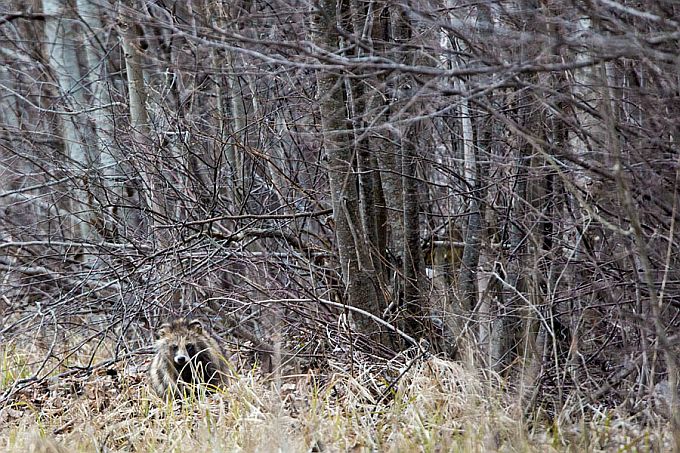Raccoon dog Kährikkoer or kährik Nyctereutes procyonoides
Surely you remember the wild boar camera, although now already absent for a year, where raccoon dogs too came to eat; one year they even had transmitter collars (zoologists studied how the season influenced their movements and use of the territory).
In February-March the raccoon dogs, the only canines who hibernate in winter, have their mating period. While some really have to run around and search for a mate, a raccoon dog pair live together and have their winter sleep together side by side in the same burrow. The weather in early February was quite frosty. During that time slumbering is a sensible occupation for raccoons too.
They mate when the female comes in heat and repeatedly. The gestation of the female lasts two months. Generally raccoon dogs are rather modest with producing sounds: they growl or yap, but at times really shrill shrieks can be heard from the nocturnal creatures. The young from last spring may have spent the winter near the adults since there are no territories outside the breeding period. The dealings between individuals are acted out through urine and dropping markings but body language at meetings is also significant. The home territory of the pair is generally less than a hundred hectares and a water body must definitely be nearby – a ditch and a generally more humid environment will do.
The weather forecast promises more spring-like weather already next week. The raccoon dogs, lean after the winter and weighing less than five kilos will totter around. They spend time to sniff at every tussock. To find a carcass nearby would be good luck because there is little plant food in nature at present and insects and their caterpillars stay hidden as well and the soil surface is frozen, The slow and clumsy raccoon dogs hunt for other small mammals and voles, but really look for everything that can do as food for the unpretentious animals.
If any of Looduskalender’s readers has photos of the tracks, digging marks or privies of raccoon dogs and would be willing to share them with other readers the next story could be about the tracks and movement habits of raccoon dogs.



